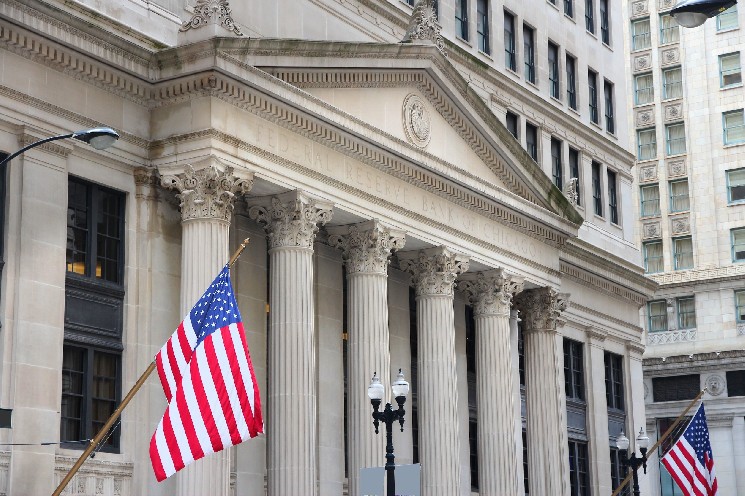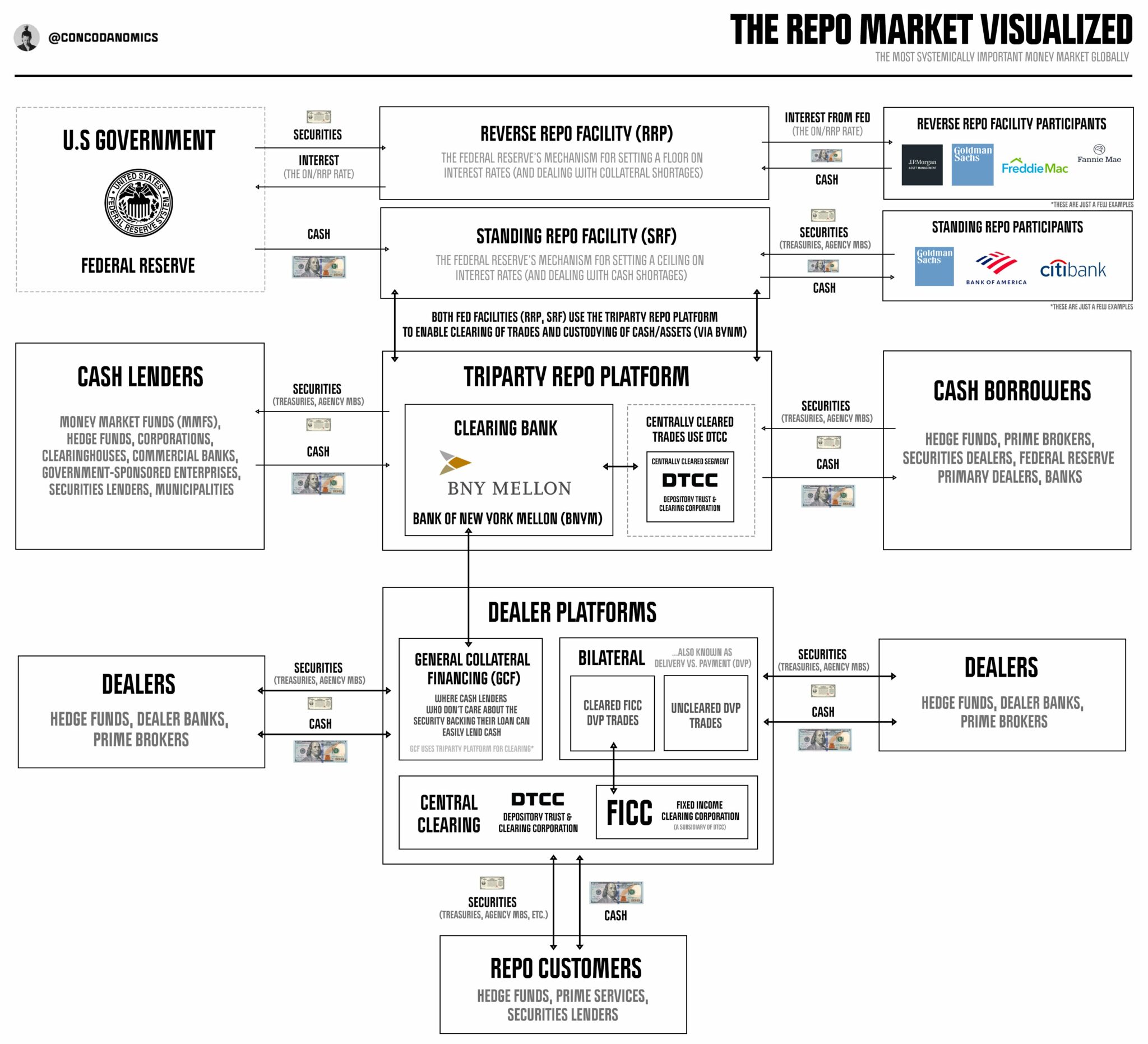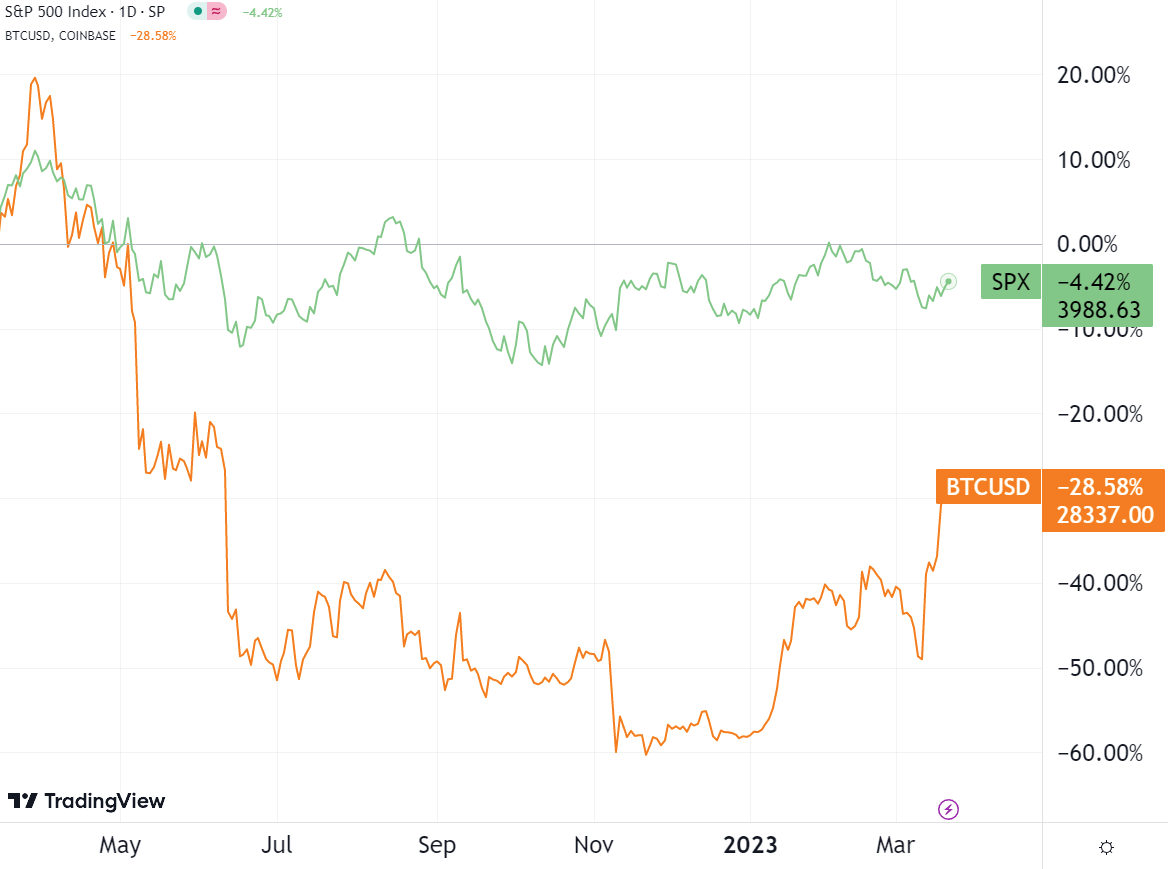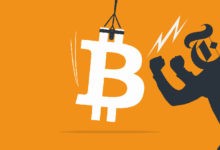Will the Fed Shift Monetary Policy Amid a Banking Crisis?

On March 22, the Federal Reserve will announce its next interest rate move at the Federal Open Market Committee (FOMC) meeting. Now that such deliberations are enveloped in the US banking uncertainty, is the overall monetary policy at a turning point?
Navigating through the Fed’s Boom and Bust Cycles
There is no shortage of comparisons between the present US banking crisis and the Great Financial Crisis (GFC) of 2008. And for a good reason. In 2008, Seattle’s Washington Mutual went bust as the largest bankruptcy in US history, holding $307 billion worth of assets.
Over the last month, Silicon Valley Bank and Signature Bank failed, holding $327 billion combined. In September 2008, the Federal Deposit Insurance Corporation (FDIC) seized Washington Mutual and sold it to JPMorgan Chase for $1.9 billion.
In response to the evolving crisis, the FOMC lowered its federal funds rate from 4.5% at the end of 2007 to 2% in September 2008. So, what led Washington Mutual to fail in the first place? Although there are multiple contributing factors, the biggest one is the federal funds rate, the Federal Reserve’s primary tool to set the cost of capital:
- In response to the weakened economy, following the Dot-com bubble burst in 2001, the federal funds rate decreased from the 2000s’ 6.24% to 2004’s average rate of 1.83%.
- In turn, the Fed began to fuel a new bubble – the housing market bubble. The sharp rise in home prices led to more subprime mortgages, including to borrowers who couldn’t afford them.
- Repackaged into derivatives via collateralized debt obligations (CDOs) and credit default swaps (CDSs), subprime mortgages injected risk into the entire financial system.
And just like the Federal Reserve started to lower the federal funds rate after the Dot-com bubble, the central bank increased it up until September 2007’s 5.25%, bursting the housing market bubble.
To speed up economic recovery, the following decade resulted in near-zero interest rates (0.25%) up until 2016. But following “implications of global developments for the economic outlook as well as muted inflation pressures,” rate cuts again came into play in July 2019.

The Federal Reserve manages economic conditions through the federal funds rate, resulting in manufactured bearish and bullish cycles. Image credit: StLouisfed.org
However, from 2019 to 2020, monetary policy took an unprecedented turn.
2019 Repo Crisis as Stimulatory Precursor
In September 2019, a repo crisis was emerging, disrupting the money markets. Short for repurchase agreements (repos), these are short-term borrowing contracts creating a money market in which one party sells securities to another party, following a buyback at a later date at a slightly higher price.

The repo market as the underpinning of the US banking system. Image credit: @concodanomics
The repo market is critical for the financial system, as banks need short-term funding to facilitate daily operations. However, a cash shortage led to a high demand for overnight funds in the repo market.
A pileup of outstanding US Treasury securities caused this. These are financial instruments by which the government borrows money from investors in return, giving them a fixed interest rate. Therefore, they are backed by the full faith and credit of the US government.
The increased amount of US Treasuries created a demand for this haven asset, leading to higher prices and lower yields. In the repo market, this manifested as a shortage of available collateral. After all, repo market participants typically use US Treasuries as collateral for their transactions.
Since post-2008 regulations prohibited banks from holding excess reserves, the banking sector relied highly on the repo market. Fast forward to September 2019, and rising repo rates created a liquidity crunch. The Federal Reserve stepped in by injecting billions of dollars, expanding its balance sheet by buying Treasury bills.
From Repo Crisis to Lockdowns
Half a year later, the Federal Reserve took an unprecedented turn on the back of a stabilized repo crisis. Following the lockdowns in March 2020, the central bank increased the M2 money supply by an outstanding 39% until February 2023.

The Fed balance sheet once again sprung following the Bank Term Funding Program (BTFP) to stabilize the banking sector. Image credit: Bloomberg
M2 money supply accounts for all cash, checking deposits, savings deposits, money market securities, serving as the broader measure of money supply. Of course, given this unprecedented money flood, one of the expected outcomes was inflationary pressure.
In addition to inflation, the excess M2 supply buildup in the near-zero interest regime led to excessive borrowing and lending. This created asset bubbles, from stocks and cryptos to real estate, surpassing their fundamental values.
Initially, lockdowns culled consumer demand and delayed inflation. But it eventually went from “transitory” to rampant, peaking at 40-year ATH at 9.1% in June 2022, measured as CPI. The Fed had to mirror the rampant inflation with an equally rapid hiking cycle, the fastest in 40 years.
Also, predictably, this deflated the aforementioned asset bubbles. On-risk assets like Bitcoin took a heavier toll as the failure of overleveraged crypto companies reflected on this decentralized ‘sound money’ network.

The performance of S&P 500 and Bitcoin since the first Fed hike in March 2022. Image credit: Trading View
But now, with the banking confidence eroding, and as customer deposits are more precisely viewed as unsecured loans to banks, Bitcoin is again testing its raison d’etre. When all considered, where is the Fed’s monetary policy to go now?
The Fed’s Confines
The Federal Reserve’s dual mandate is to keep the prices stable and unemployment low. One could say the central bank broke that mandate by increasing the money supply, thus destabilizing prices. On a path of inflation correction, Fed Chair Jerome Powell also pointed out multiple times that unemployment would have to go up to cut consumer demand. This would then eventually lead to the targeted 2% inflation rate.
The US national debt also comes into play, now at $31.6 trillion, as it needs to be serviced. By increasing rates, the Fed would also have to raise interest payments. The Congressional Budget Office (CBO) projects that the federal debt held by the public will grow to 195% of GDP by 2053.

Image credit PGPF.org
Powell openly admitted that the country is on a path to unsustainable debt but still within the confines of sustainable debt.
? Fed. Chair Jerome Powell Says the U.S. is Heading Towards a Big Problem w/ Our Economy
«The problem is that we are on a path where the debt is growing substantially faster than the economy and that’s, by definition in the long run, unsustainable» pic.twitter.com/ijIj96707l
— Chief Nerd (@TheChiefNerd) March 7, 2023
Therefore, this would be a signal against increasing interest rates. Moreover, in light of the recent erosion of confidence in the US banking sector, it is clear that the Fed destabilizes commercial banks’ balance sheets, particularly if they hold significant US Treasuries as safe-haven assets. After all, this is how SVB collapsed without hedging for such exposure risk.
The banking crisis also worsened financial conditions, the tightest since March 2020.

Bloomberg’s Financial Conditions Index gives the Fed a green light as financial conditions have sufficiently worsened to pre-March stimulus binge. Image credit: Bloomberg Finance
This is another signal for the Fed to either pause, slow, or even cut rates down the line. The market consensus is at 86.4% for the previously expected 25 bps hike on March 22, elevating the fed target rate to the 4.75 – 5.00% range. Only 13.6% expect zero hikes.







 Bitcoin
Bitcoin  Ethereum
Ethereum  Tether
Tether  USDC
USDC  Dogecoin
Dogecoin  Cardano
Cardano  TRON
TRON  Bitcoin Cash
Bitcoin Cash  Chainlink
Chainlink  Polygon
Polygon  Litecoin
Litecoin  LEO Token
LEO Token  Dai
Dai  Ethereum Classic
Ethereum Classic  Hedera
Hedera  Cronos
Cronos  Cosmos Hub
Cosmos Hub  Stellar
Stellar  Stacks
Stacks  OKB
OKB  Maker
Maker  Monero
Monero  Theta Network
Theta Network  Algorand
Algorand  NEO
NEO  Gate
Gate  EOS
EOS  KuCoin
KuCoin  Tezos
Tezos  Synthetix Network
Synthetix Network  IOTA
IOTA  Tether Gold
Tether Gold  Bitcoin Gold
Bitcoin Gold  TrueUSD
TrueUSD  Enjin Coin
Enjin Coin  Zilliqa
Zilliqa  Holo
Holo  Ravencoin
Ravencoin  0x Protocol
0x Protocol  Siacoin
Siacoin  Qtum
Qtum  Basic Attention
Basic Attention  Dash
Dash  Zcash
Zcash  NEM
NEM  Decred
Decred  Ontology
Ontology  Lisk
Lisk  Waves
Waves  DigiByte
DigiByte  Status
Status  Numeraire
Numeraire  Nano
Nano  Pax Dollar
Pax Dollar  Hive
Hive  Steem
Steem  Huobi
Huobi  OMG Network
OMG Network  BUSD
BUSD  Ren
Ren  Bitcoin Diamond
Bitcoin Diamond  Bytom
Bytom  Kyber Network Crystal Legacy
Kyber Network Crystal Legacy  HUSD
HUSD  Energi
Energi  Augur
Augur